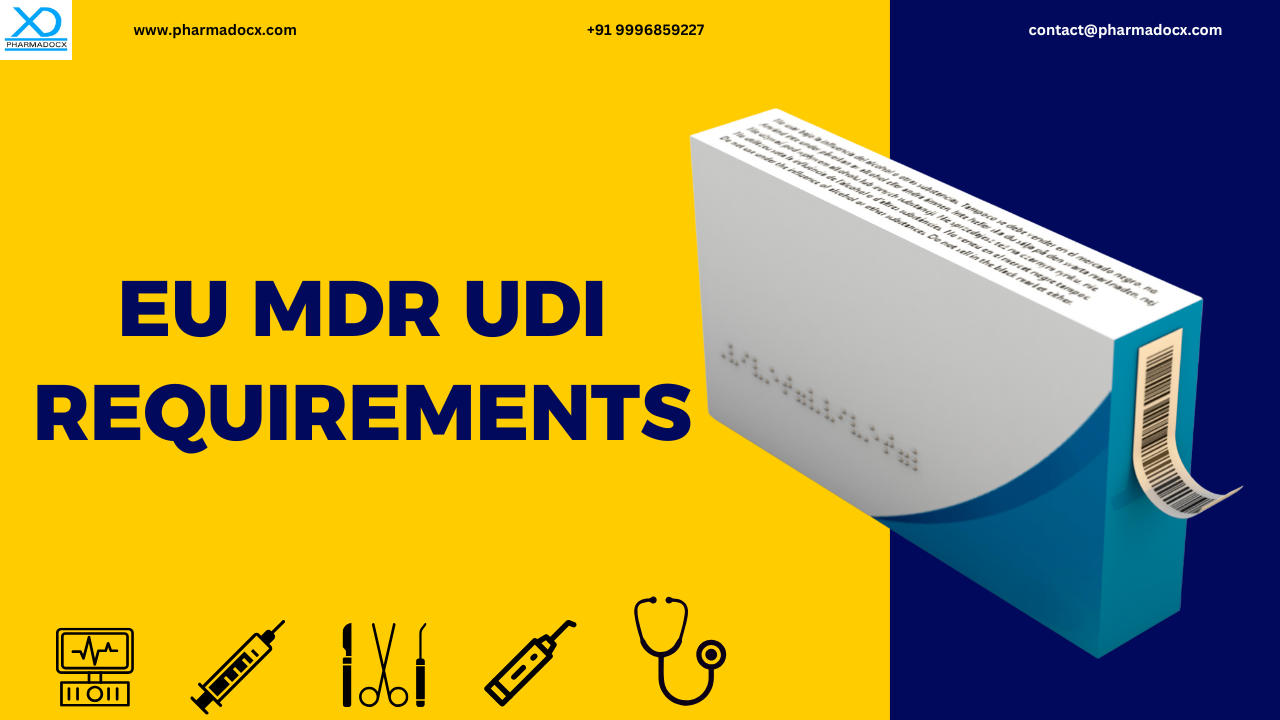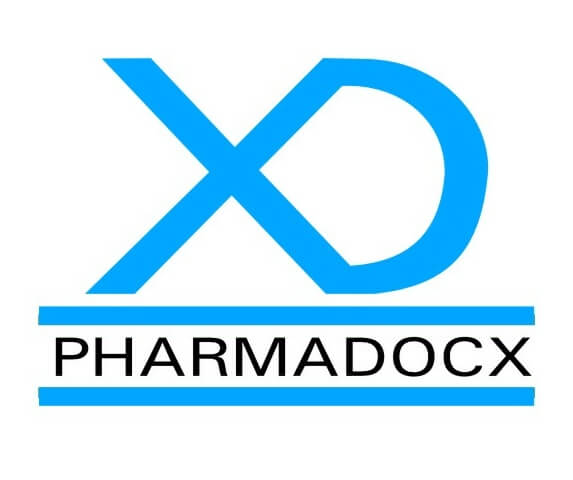Under the EU Medical Device Regulation (MDR), the Unique Device Identification (UDI) system is mandatory for most medical devices. The aim is to enhance traceability, post-market surveillance, and patient safety. Manufacturers must assign a Basic UDI-DI for device groups and a UDI-DI/UDI-PI for individual models and production batches. Additionally, they must affix UDI carriers (e.g., barcodes or DataMatrix) on labels and packaging. Furthermore, they are required to register these identifiers in the EUDAMED database before market placement. On the other hand, distributors must verify UDI presence, maintain traceability records, and support recall readiness. In this blog, we have detailed the EU MDR UDI requirements. We will explain the fundamentals of a UDI system. Additionally, we have presented the specific roles of manufacturers and distributors in EU MDR UDI compliance. Furthermore, we will detail the steps for EUDAMED registration of UDI.
What is the UDI system?
To understand the EU MDR UDI requirements, it is important to understand what is the UDI system. The Unique Device Identification (UDI) system is a globally harmonized framework designed to uniquely identify medical devices throughout their lifecycle, from manufacturing to end use. It enhances traceability, post-market surveillance, and patient safety.
Notably, the UDI must appear on the device label and all higher levels of packaging. For reusable devices, UDI must be directly marked on the device if feasible.
Key elements of the UDI system
- UDI-DI: UDI-DI is the device identifier. It is a static code identifying the manufacturer and model/version.
- UDI-PI: UDI-PI is the production identifier. It is a dynamic code with lot number, serial number, expiry date, etc.
- Basic UDI-DI: Basic UDI-DI is the primary identifier for a group of devices with the same intended purpose and risk class. It is used in documentation and EUDAMED but not on labels.
UDI requirements for Software as a Medical Device (SaMD)
- Software must carry the UDI.
- UDI-DI has to be changed with major updates. Whereas, UDI-PI has to be changed with minor updates.
- UDI must be displayed in the software interface and packaging.
EU MDR UDI requirements
As per EU MDR requirements, the Unique Device Identification (UDI) system is mandatory for most medical devices to improve traceability, post-market surveillance, and patient safety. Thus, UDI forms a cornerstone of the EU MDR. We aim to demystify the EU MDR UDI requirements.
The UDI system will contain the UDI-DI, UDI-PI, and basic UDI-DI. These identifiers must be affixed to device labels and packaging in both human- and machine-readable formats (e.g., barcodes or DataMatrix codes). Additionally, they should be registered in the EUDAMED database before the device is placed on the EU market. The UDI-DI will be used to access device information in the EUDAMED database. Additionally, the basic UDI-DI, which is not used on labels, is required in technical documentation and EUDAMED. Notably, SaMDs are required to carry a UDI.
Manufacturers have been allocated the primary responsibility for assigning and affixing the UDI. On the other hand, distributors are integral to the effective functioning of the UDI system. They are required to verify UDI presence and legibility as well as report UDI related issues.
Labeling and placement requirements
- The UDI must be placed on the device label, packaging, and in some cases, directly on the device.
- The UDI must be in both human-readable and machine-readable (e.g., barcode) formats.
Purpose and benefits of EU MDR UDI requirements
- Improved traceability for product recalls and adverse event investigations
- Enhanced post market surveillance and transparency
- Streamlined inventory and supply chain management
- Better data for clinical and regulatory decision-making
EU MDR UDI requirements: Roles of manufacturers and distributors in UDI compliance
As per EU MDR UDI requirements, both manufacturers and distributors have been assigned critical roles in ensuring the integrity and effectiveness of the UDI system. Manufacturers are primarily responsible for generating and registering UDI data. Whereas, distributors are essential in maintaining traceability and compliance throughout the supply chain.
Manufacturer responsibilities in UDI compliance
Manufacturers are the primary actors responsible for implementing the UDI system. Their obligations include:
- Assigning the UDI: Basic UDI-DI is assigned to a group of devices with the same intended purpose, risk class, and essential design. UDI-DI is assigned to each device model/version. UDI-PI includes production-specific data like lot number, serial number, expiry date.
- Affixing UDI carriers: Affix UDI in both human-readable and machine-readable formats (e.g., barcode, DataMatrix, RFID) on device label, all higher levels of packaging, or directly on reusable devices (if applicable).
- Registering UDI in EUDAMED: Submit Basic UDI-DI and UDI-DI data to the EUDAMED database before placing the device on the EU market.Ensure data accuracy and completeness per EU MDR UDI requirements.
- Maintaining UDI Data: Update UDI records in EUDAMED when changes occur (e.g., device design, intended use).Ensure consistency across labeling, technical documentation, and regulatory submissions.
- Software-Specific UDI: Assign new UDI-DI for major software changes. Update UDI-PI for minor revisions. Display UDI within the software interface and packaging.
Distributor responsibilities in UDI compliance
Distributors, while not responsible for generating UDIs, are critical in verifying and preserving UDI integrity across the supply chain.
- Verification at receipt: Check that devices bear a valid and legible UDI carrier on the label and packaging. Additionally, ensure the UDI matches the product documentation and regulatory requirements.
- Recordkeeping and traceability: Maintain internal records linking received devices to their UDI-DI and UDI-PI. Ensure traceability of devices throughout warehousing, logistics, and dispatch.
- Incident reporting: Report any UDI-related issues (e.g., missing, incorrect, or unreadable UDI) to the manufacturer. Notify competent authorities if required.
- System readiness: Upgrade Warehouse Management Systems (WMS) and Enterprise Resource Planning (ERP) systems to capture and manage UDI data. Ensure scanning equipment can read 2D DataMatrix and other UDI carriers.
- Support for recalls and field safety actions: Use UDI data to quickly identify affected devices in the event of a recall. Facilitate targeted communication with customers and authorities.
Collaboration between manufacturers and distributors
- Data exchange: Manufacturers must provide accurate UDI data to distributors in a usable format.
- Training: Distributors should train staff on UDI scanning, verification, and data handling.
- Audits: Both parties should conduct regular audits to ensure UDI compliance and data integrity.
EUDAMED registration of UDI
EUDAMED registration is a part of EU MDR UDI requirements. The EUDAMED is the EU’s central medical device database for collecting and managing information on medical devices and in vitro diagnostics. EUDAMED registration of UDI involves submitting detailed device identification data into the EU’s central medical device database to ensure traceability, transparency, and regulatory compliance. Only manufacturers can perform this registration. Moreover, it requires prior actor registration.
Key data required
- UDI-DI: Model/version-specific identifier
- Device name: Trade name or commercial name
- Risk class: Class I, IIa, IIb, III
- Intended purpose: Clinical use and target population
- Packaging levels: UDI carrier placement details
- Manufacturer details: Name, SRN, contact information
4 key steps
- Actor registration: Manufacturers must first register as an economic operator in EUDAMED. Requires at least two local actor administrators.
- Device registration: Submit Basic UDI-DI and UDI-DI data sets. Include device attributes like risk class, intended purpose, GMDN code, and packaging levels.
- Data submission format: XML uploads or manual entry via the EUDAMED portal. Must comply with the EU MDR UDI requirements.
- Validation and publication: Submitted data undergoes validation. Once accepted, it becomes publicly accessible (except confidential fields).
Therefore, compliance with EU MDR UDI requirements is mandatory for all key stakeholders, namely manufacturers and distributors. UDI under EU MDR is not just a labeling requirement; it is a foundational tool for regulatory compliance, operational efficiency, and patient safety. By embedding UDI into their quality systems, manufacturers and distributors can strengthen supply chain integrity, streamline recalls, and contribute to a more transparent and accountable medical device ecosystem. For any assistance with EU MDR compliance, feel free to email at [email protected] or call/Whatsapp on 9996859227.





